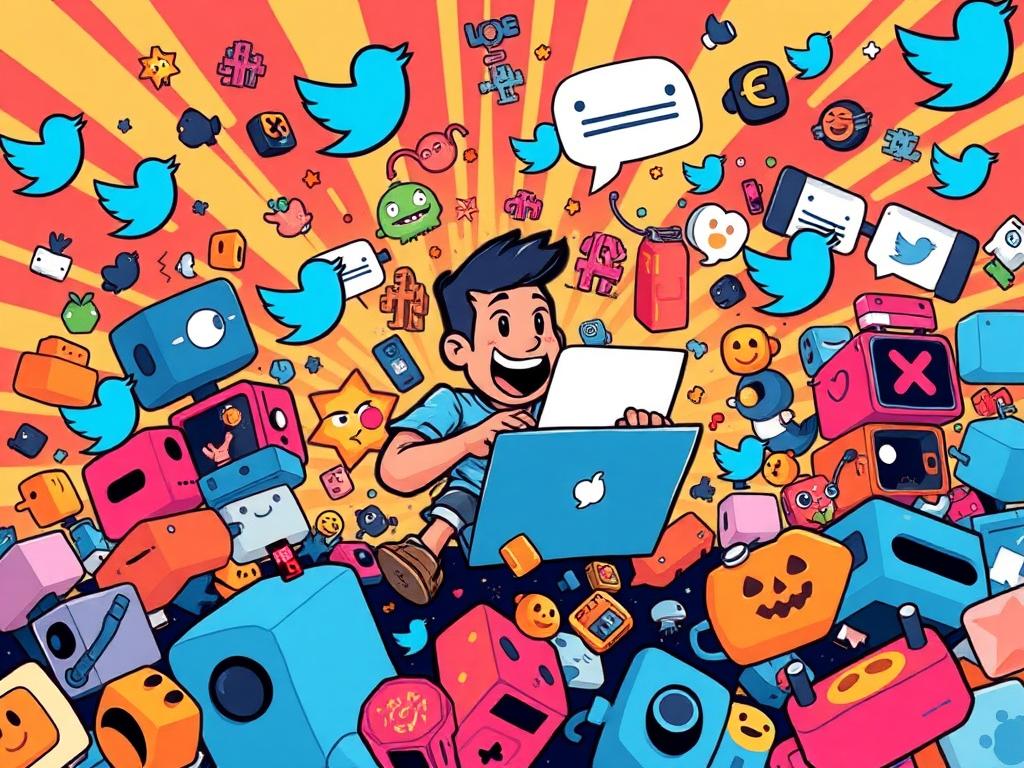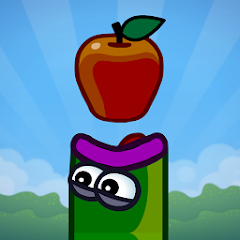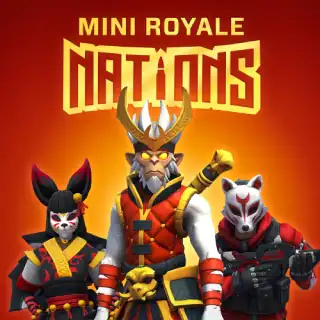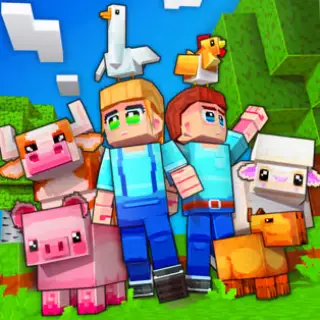Viral X Twitter Browser Games: Hits, Clones, and Their Social Media Impact
The digital landscape is constantly evolving, and at its forefront, a fascinating phenomenon has captured the attention of millions: the rise of viral X Twitter browser games. These aren’t just fleeting trends; they are potent cultural touchstones, exploding onto the scene with astonishing speed, dominating conversations, and sucking players into their deceptively simple yet profoundly addictive loops. From unexpected breakout hits that redefine casual gaming to the subsequent proliferation of meticulously crafted browser game clones, the impact on social media is undeniable. This article delves deep into the mechanisms behind these phenomena, exploring what makes a simple addictive online game spread like wildfire, how platforms like X become their ultimate launchpad, and what the future holds for this dynamic intersection of gaming and social interaction. Prepare to unlock the secrets behind the most captivating viral game hits and understand how they shape our collective digital experience.
The Anatomy of a Viral Browser Game
What gives a seemingly simple browser game the power to captivate millions and become a global sensation? It’s not always about cutting-edge graphics or complex narratives. Often, the magic lies in a confluence of factors that make them inherently shareable and universally appealing. Understanding these foundational elements is crucial to grasping the ecosystem of viral browser games.
Simplicity and Accessibility: Why Browser-Based Means Instant Play
The first, and perhaps most critical, factor is accessibility. Browser games, by their very nature, eliminate barriers to entry. There’s no cumbersome download, no installation process, no system requirements to check. A player simply navigates to a URL, and within seconds, they can play viral games. This immediate gratification is a powerful driver of virality. Consider the casual user scrolling through their X feed; if a game link appears, the path from curiosity to engagement is incredibly short. This ease of access encourages impulse plays, which can quickly convert into habitual engagement if the game is compelling. The ubiquity of web browsers across devices – from desktops to laptops, tablets, and smartphones – ensures that these games are available to virtually anyone with an internet connection, regardless of their device’s processing power. This low friction point is paramount for any content aspiring to go viral. Discover more free browser games you can play instantly.
Low Barrier to Entry: Cross-Device Appeal and Universal Understanding
Beyond technical accessibility, viral browser games typically possess a low cognitive barrier to entry. Their mechanics are often straightforward, intuitive, and require minimal explanation. Think of games like Wordle, 2048, or even earlier phenomena like Flappy Bird. The core gameplay loop is easily understood within seconds, allowing players to jump straight into the fun without a steep learning curve. This universal appeal transcends language and cultural barriers, making them digestible by a global audience. Furthermore, the cross-device compatibility isn’t just about technical reach; it’s about seamless transitions. A player might start a game on their laptop during a lunch break, then pick it up on their phone while commuting. This fluidity encourages sustained engagement and deeper immersion into the addictive online games experience, fostering a pervasive presence in users’ daily lives.
The Core Loop: Addictive Mechanics and Psychological Hooks
At the heart of every viral game hit lies a meticulously crafted core loop designed to be inherently addictive. This loop typically involves simple actions leading to immediate feedback, often with an element of challenge or progression. The feeling of accomplishment, however small, triggers dopamine release, encouraging continued play. Whether it’s the satisfying “thwack” of a successful swing, the visual flourish of a cleared row, or the rewarding feeling of solving a daily puzzle, these micro-interactions create a powerful psychological hook. Many social media games also integrate elements of chance, scarcity (like daily challenges), and social comparison (leaderboards, sharing results) to amplify their addictive qualities. The goal is to make players feel compelled to return, to improve their score, to share their triumphs, and to engage with the game as a daily ritual. Explore some of the most addictive browser games available.
X (Twitter) as the Launchpad for Gaming Phenomena
While a game’s inherent design fuels its virality, the platform it rides on is equally critical. For many, X (formerly Twitter) has proven to be an unparalleled launchpad for viral X games browser version, providing the ideal environment for rapid dissemination and community building. Its unique architecture facilitates the swift spread of content, transforming niche interests into global obsessions almost overnight.
Hashtag Hype: How Games Become “Trending Twitter Game Online”
The hashtag system on X is a powerful engine for virality. When a game captures public imagination, discussions around it coalesce under specific hashtags. Users share their scores, triumphs, frustrations, and memes, all tagged appropriately. This collective engagement pushes the game’s associated hashtags into the “Trending” topics, exposing it to a massive audience beyond existing followers. For developers, seeing their creation become a “trending Twitter game online” is the ultimate validation and the holy grail of organic reach. This visibility acts as a self-fulfilling prophecy: more people see the trend, more people click and play, more people tweet, and the cycle accelerates. The ephemeral nature of X’s feed also means that new trends are constantly emerging, creating a dynamic environment where a game can quickly seize the spotlight. Learn strategies to navigate popular browser games.
Shareability and Virality: The Built-in Social Graph
X’s core design ethos—short, digestible posts, easy retweeting, and direct replies—makes it perfect for sharing game results and experiences. Many viral browser games even include built-in “Share to X” buttons, generating perfectly formatted posts with scores, progress, and an invitation for others to “play [viral game name] browser.” This seamless integration leverages X’s expansive social graph. A single share from an influential user can propagate across thousands or even millions of timelines, reaching audiences that traditional marketing campaigns could only dream of. The competitive yet playful nature of sharing scores or daily puzzle solutions encourages users to challenge their friends, transforming solitary play into a collective, competitive social activity. This organic word-of-mouth marketing, amplified by X’s network effect, is what transforms a good game into a global phenomenon.
Influencers and Communities: Fueling the Fire
The virality of Twitter browser games is often supercharged by influencers, content creators, and dedicated online communities. When a popular streamer, YouTuber, or X personality highlights a game, it instantly gains immense exposure. Their endorsement acts as a powerful signal, driving their followers to check out the game. Beyond individual influencers, communities on X, Reddit, Discord, and other platforms form around these games, sharing tips, strategies, memes, and creating their own subcultures. These communities sustain the game’s relevance long after its initial viral peak, providing a constant stream of user-generated content and discussions that keep the game in the public consciousness. This organic ecosystem of sharing, discussion, and amplification is the true engine behind the enduring power of social media gaming trends.
Iconic Viral Hits and Their Echoes
The history of viral browser games is punctuated by a series of legendary hits that not only dominated social media feeds but also inspired countless imitations. These games often share a common thread: simplicity, immediate gratification, and a clever hook that encourages sharing and competition. Their impact extends far beyond their initial popularity, shaping the landscape of casual online gaming and illustrating the power of social media games.
Case Study 1: Wordle – A Cultural Phenomenon
Few games have captured the collective imagination quite like Wordle. Originating as a personal project, this simple word puzzle game exploded onto the scene, primarily via X (Twitter). Its genius lay in its simplicity: guess a five-letter word in six tries, with color-coded feedback. But the true stroke of brilliance was its share feature, which generated a spoiler-free grid of emojis that immediately became recognizable across timelines. This allowed players to share their triumphs (or struggles) without giving away the answer, fostering a sense of camaraderie and gentle competition. “Play Wordle browser” became a daily ritual for millions. It wasn’t just a game; it was a conversation starter, a daily challenge, and a shared cultural moment. Its success proved that a well-designed viral X game browser version, perfectly integrated with social sharing, could achieve unprecedented organic reach, demonstrating the true power of viral game hits.
Case Study 2: The Flappy Bird Legacy and its Browser Clones
While Flappy Bird itself was primarily a mobile app, its insane virality and subsequent removal sparked a massive wave of imitation, particularly in the browser gaming space. Its simple, maddeningly difficult gameplay—tap to make a bird fly between pipes—was a perfect recipe for frustration, addiction, and competitive sharing. The immediate response was a flood of “Flappy Bird clones” across various platforms, including numerous browser versions. These browser game clones sought to capitalize on the original’s success, offering similar mechanics but often with different aesthetics or minor tweaks. This phenomenon highlighted the swift reaction time of developers in the wake of a viral hit, rushing to provide alternatives and tap into the existing player base. It demonstrated that even a defunct game could leave a lasting legacy through its clones, shaping social media gaming trends and proving the replicable nature of core viral mechanics. Try a similar addictive game like FlappyCat Crazy Copters.
Case Study 3: Social Deduction and Cultural Impact (e.g., Among Us Variants)
Games like Among Us, though not exclusively browser-based, illustrate the immense social impact of games that foster interaction and deception. Its premise—a group of crewmates trying to identify impostors—translated perfectly into engaging social media content, memes, and widespread discussion. This led to numerous social media game clones free and adaptations available directly in browsers, often simplifying the core mechanics for quick play. These browser variants capitalize on existing cultural trends and user familiarity, allowing players to jump into a social deduction experience without needing to download a full application. The success of such games, and their browser counterparts, underscores how viral X games browser version can tap into broader cultural narratives, turning abstract concepts into tangible, playable experiences that fuel endless debates, theories, and shared laughs across X and other platforms. Dive into a social deduction party game online.
The Proliferation of Browser Game Clones
The moment a game becomes a viral game hit, the clock starts ticking for developers around the world. The speed at which clones, derivatives, and “inspired” versions appear is astounding. This rapid proliferation of browser game clones is a defining characteristic of the viral gaming landscape, driven by market demand, technological accessibility, and the desire to capitalize on existing hype.
The Copycat Economy: Why Developers Rush to Create “Social Media Game Clones Free”
The primary driver behind the copycat economy is simple: proven demand. Once a game achieves viral status, it demonstrates a clear appetite for its core mechanics or theme. Developers, keen to tap into this existing audience, can rapidly create a “social media game clones free” version that offers a similar experience. The barriers to entry for browser game development are relatively low, especially with modern web technologies like HTML5 and JavaScript. This enables small teams or even individual developers to quickly iterate and launch their own versions. The goal isn’t necessarily to innovate, but to capture a slice of the existing traffic, often with monetized ads or microtransactions. This rapid deployment allows them to ride the wave of the original’s popularity, ensuring their creation appears in search results and social feeds while the buzz is still high. The speed-to-market is paramount in this competitive environment.
Iteration vs. Innovation: Improving on the Original
While many clones are simple copies, some aim to iterate and even improve upon the original. These “inspired by” games might add new levels, different character skins, enhanced graphics, or slightly tweaked mechanics. For instance, a basic viral X game browser version might inspire a clone that introduces multiplayer elements or a persistent leaderboard, deepening the engagement. This iterative process can sometimes lead to new viral hits in their own right, as a clone refines the formula or introduces a novel twist that resonates with players. It’s a dynamic where the original concept acts as a blueprint, and subsequent developers experiment with variations, testing what resonates best with the audience. This constant evolution, fueled by both direct copying and creative iteration, keeps the browser gaming ecosystem vibrant and fast-paced.
Monetization Strategies in Clones: Ads, Microtransactions, and Beyond
For many developers of browser game clones, the primary motivation is monetization. Since the games are often free to play, revenue typically comes from advertising. This can include display ads, interstitial ads between game rounds, or rewarded video ads that offer in-game bonuses. Some clones also implement microtransactions, allowing players to purchase cosmetic items, in-game currency, or unlock features. While the ethical implications of directly copying a game can be debated, the business model is clear: leverage viral demand to drive ad impressions and purchases. The sheer volume of traffic generated by a viral sensation means that even a small conversion rate or ad revenue per user can translate into substantial income, making the rapid development of clones a lucrative venture within the landscape of addictive online games. Explore various monetization strategies in browser games.
Mechanics of Addiction: What Makes These Games Irresistible?
Beyond their accessibility and social integration, the true genius of viral browser games lies in their ability to tap into fundamental human psychological triggers. They are expertly designed to be addictive online games, creating loops of engagement that compel players to return, often against their better judgment. Understanding these psychological hooks is key to appreciating their power.
Instant Gratification Loops: The Dopamine Hit
The most potent weapon in a viral game’s arsenal is the instant gratification loop. Every action, every decision, every successful move in these games is often met with immediate, positive feedback. A satisfying sound effect, a visual flourish, a score increase, or a new level unlocked—these small rewards trigger a dopamine release in the player’s brain. This neurochemical response creates a pleasure-reward pathway, training the player to associate the game with positive feelings. Unlike complex RPGs or strategy games that require long-term investment for rewards, viral X games browser version deliver these hits consistently and quickly. This rapid reward cycle makes them incredibly hard to put down, fostering a craving for the next “hit” of success and making them profoundly addictive online games. Master advanced strategies for winning at browser games.
Competitive Leaderboards and Social Proof
Humans are inherently social creatures, driven by comparison and the desire for recognition. Viral browser games skillfully leverage this through competitive leaderboards and the ability to share scores. Seeing one’s name climb the ranks, or even just beating a friend’s score shared on X, provides immense motivation. This “social proof” not only validates a player’s skill but also provides a powerful incentive to keep playing, to improve, and to demonstrate prowess. The implicit challenge—”Can you beat my score?”—becomes a viral engine in itself. It transforms a solitary activity into a communal one, fostering a sense of competition and belonging. This social dynamic ensures that players aren’t just playing against the game; they’re playing against (and with) their entire social network, solidifying the game’s status as a trending Twitter game online.
Scarcity and Daily Challenges
Many viral game hits incorporate elements of scarcity, particularly through daily challenges or limited attempts. Wordle, with its single daily puzzle, is the quintessential example. This creates a sense of urgency and exclusivity. Players know they have one chance a day, which makes them value each attempt and look forward to the next. This also prevents burnout, ensuring that the game remains fresh and desirable. For games without a strict daily limit, timed events, limited-time power-ups, or daily login bonuses serve a similar purpose, encouraging consistent return visits. This subtle manipulation of availability leverages psychological principles to maintain engagement, ensuring that the game remains a staple in players’ routines rather than a fleeting distraction. This strategic deployment of scarcity helps maintain the allure of addictive online games over time.
Social Media Impact Beyond X: Broader Digital Footprint
While X (Twitter) often acts as the primary launchpad for viral browser games, their influence rarely remains confined to a single platform. The true measure of their social media impact lies in their ability to permeate the broader digital landscape, fostering communities, generating content, and shaping conversations across diverse online spaces. This expansive reach solidifies their place as significant social media games.
TikTok, Reddit, and Discord: Expanding the Viral Reach
Once a game gains traction on X, its virality quickly spills over onto other platforms. TikTok, with its short-form video content, becomes a hotbed for gameplay clips, reaction videos, and humorous skits related to the game. Seeing a game in action, especially with an engaging creator, is a powerful draw for new players. Reddit hosts dedicated subreddits where players dissect strategies, share fan theories, and discuss updates, creating deep, persistent communities. Discord servers serve as real-time hubs for players to coordinate, chat, and engage directly with developers. Each platform contributes a unique layer to the game’s social footprint, reaching different demographics and fostering different types of interaction. This multi-platform presence ensures that the game remains visible and relevant across the digital lives of millions, further entrenching its status as a trending Twitter game online and beyond.
User-Generated Content: Memes, Fan Art, Streams
A strong indicator of a game’s viral success is the explosion of user-generated content (UGC). Players don’t just play; they create. This manifests in countless ways:
- Memes: Humorous images or videos that capture the game’s essence, common frustrations, or inside jokes. These are easily shareable and spread rapidly, providing free, organic marketing.
- Fan Art: Dedicated players express their appreciation through illustrations, animations, and other creative works, deepening the emotional connection to the game.
- Gameplay Streams and Tutorials: Content creators on platforms like Twitch and YouTube livestream their sessions, offer guides, or produce analytical videos, drawing in new players and entertaining existing ones.
This endless cycle of UGC keeps the game fresh, relevant, and visible, acting as a constant reminder of its presence. It transforms passive consumption into active participation, turning players into advocates and ensuring the game’s sustained cultural relevance. The richness of this ecosystem is a testament to the profound social impact of social media games.
Bridging Communities: From Niche to Mainstream
Viral browser games often possess the unique ability to bridge disparate online communities and propel niche interests into the mainstream. A game that might start within a specific gaming community on X or Discord can, through its viral spread, reach individuals who don’t typically identify as “gamers.” Wordle, for example, resonated deeply with language enthusiasts, puzzle lovers, and a general audience, transcending traditional gaming demographics. This cross-pollination of audiences not only expands the game’s player base but also fosters new connections between previously isolated online groups. It demonstrates how a simple, accessible game can become a shared cultural touchpoint, dissolving boundaries and creating a unified, albeit temporary, collective experience across the digital landscape. This makes them powerful agents in shaping wider social media gaming trends.
Future Trends: The “Next Big Browser Viral Game”
Predicting the exact nature of the “next big browser viral game” is like trying to catch lightning in a bottle. However, by observing current technological advancements and evolving user behaviors, we can identify several trends that are likely to shape the future of viral browser games and influence upcoming social media gaming trends. The landscape is ripe for innovation, as developers push boundaries and leverage emerging capabilities to create new forms of engaging content.
AI Integration: Dynamic Content, Personalized Experiences
Artificial intelligence is poised to revolutionize casual gaming. Future viral browser games might feature AI-generated levels, adaptive difficulty that constantly tailors the experience to the player’s skill, or even dynamically evolving narratives in simpler story-driven games. Imagine a puzzle game where the daily puzzle is generated by an AI, ensuring infinite variety and ever-fresh challenges, far beyond what static human-designed levels can offer. Personalization could extend to game mechanics, visual styles, or even social interactions within the game, making the experience uniquely tailored to each player. This level of dynamic content could significantly enhance replayability and foster deeper engagement, ensuring that players always find something new and compelling. AI-driven personalization could be a key differentiator for the next big browser viral game, making an already addictive experience even more captivating.
Web3 and Blockchain Elements: NFTs, Play-to-Earn
The burgeoning Web3 space, with its emphasis on decentralized ownership and blockchain technology, is beginning to intersect with gaming. While still in its early stages, we might see viral browser games incorporating elements like non-fungible tokens (NFTs) for in-game assets (e.g., unique skins, rare items) that players truly own. The “play-to-earn” model, where players can earn cryptocurrency or NFTs through gameplay, could also emerge. While controversial and facing scalability challenges, the appeal of earning real-world value by simply playing an addictive online game could be a powerful viral incentive. Imagine a puzzle game where solving the daily puzzle earns you a fraction of a token, or a competitive game where high-ranking players earn unique, tradable NFTs. This paradigm shift could fundamentally alter how players engage with and perceive the value of their time spent in browser games. See how browser games have evolved over time.
Cross-Platform Evolution: Seamless Experience and Cloud Gaming
The distinction between mobile, console, and browser gaming continues to blur. Future viral browser games will likely offer even more seamless cross-platform experiences, where progress syncs effortlessly across devices. Cloud gaming, though resource-intensive for complex titles, could enable more visually rich and mechanically sophisticated games to be streamed directly to browsers, overcoming hardware limitations. This means players could start a game on a powerful PC, continue on a basic smartphone via a browser, and pick it up again on a smart TV, all without downloads or significant setup. This ultimate accessibility and fluidity will further embed these games into every facet of daily life, making them truly ubiquitous and increasing the potential for a trending Twitter game online to reach an even broader audience. Explore top browser games you can play without download in 2024.
Niche Dominance: Capturing Specific User Intent
As the market matures, we might see a shift from broad, universally appealing games to those that masterfully capture specific niche user intent. This means highly specialized viral browser games catering to very particular interests, communities, or even sub-genres that haven’t yet been fully explored. For instance, games built around specific cultural phenomena, highly specialized puzzle types, or interactive storytelling formats that resonate deeply with a particular online group. While their initial reach might be smaller, their engagement within that niche could be profoundly deeper, making them highly effective at driving discussions and shares within those targeted communities on X and beyond. The power lies in serving hyper-focused needs, leading to intense loyalty and organic virality within that specific segment, potentially identifying the next big browser viral game for a dedicated audience.
Monetization and Business Models for Viral Browser Games
While the focus of viral browser games is often on their free accessibility and widespread reach, their creators frequently employ diverse and sophisticated monetization strategies. These models are crucial for sustaining development, supporting servers, and ensuring the continued evolution of these popular online experiences. The art lies in balancing player experience with revenue generation, transforming addictive online games into sustainable businesses.
Ad-Driven Revenue: Display, Interstitial, Video Ads
The most common monetization method for free-to-play viral browser games is advertising. This takes several forms:
- Display Ads: Static banners or small boxes placed strategically around the game interface, though care must be taken not to obstruct gameplay.
- Interstitial Ads: Full-screen advertisements that appear at natural breaks in the game, such as between levels or after a round ends. While sometimes intrusive, they offer high visibility.
- Rewarded Video Ads: Players choose to watch a short video ad in exchange for in-game benefits, like extra lives, currency, or temporary power-ups. This is often the most accepted form of advertising as it provides direct value to the player.
The sheer volume of traffic generated by a viral game hit means that even a low ad revenue per user can translate into substantial overall earnings, making this a highly attractive model for games designed for mass appeal. The constant flow of new players from social media platforms ensures a fresh audience for ad impressions, solidifying the business case for creating social media games.
Premium Features & Cosmetics: In-Game Purchases
Beyond ads, many viral browser games adopt a freemium model, offering optional in-game purchases that enhance the player’s experience without being mandatory. These typically fall into two categories:
- Cosmetic Items: Skins, avatars, emojis, or visual effects that don’t affect gameplay but allow players to personalize their experience and stand out. These are particularly popular in games with a strong social component.
- Convenience/Progression Boosts: Items that save time, provide a temporary advantage, or unlock content faster. Examples include extra lives, ad-free play, or bundles of in-game currency.
The success of this model relies on a significant player base, where even a small percentage of “whales” (high-spending players) can generate substantial revenue. The goal is to make these purchases feel like a valuable addition rather than a pay-to-win requirement, maintaining the free-to-play integrity while offering enticing upgrades for those who wish to invest further in their play viral games experience.
Sponsorships and Brand Integrations
As a viral game hit gains significant traction, it can become an attractive platform for brand partnerships and sponsorships. This can range from subtle in-game product placements (e.g., branded power-ups or advertisements within the game world) to more overt collaborations where a brand sponsors a specific game mode, event, or even a branded version of the game itself. For instance, a food delivery service might sponsor a daily challenge in a popular puzzle game, or a movie studio might create a themed level to promote an upcoming release. These partnerships offer non-traditional revenue streams that can be highly lucrative, especially for games with a large, engaged, and demographically desirable audience. They represent a sophisticated evolution in monetization, leveraging the cultural impact of social media games for mutual benefit. Find browser games suitable for kids and families, perfect for potential brand collaborations.
Developing and Launching Your Own Viral Browser Game
For aspiring creators, the allure of crafting the next big browser viral game is immense. While there’s no guaranteed formula, understanding the principles behind successful viral game hits and leveraging the power of social media platforms can significantly increase the chances of achieving widespread adoption and becoming a trending Twitter game online. The process involves identifying a compelling core, rapid development, and strategic dissemination.
Identifying the Viral Hook
The first step is to distill the essence of what makes a game “viral.” It’s rarely about complexity. Instead, focus on:
- Simplicity: Can a new player understand the core mechanic in less than 30 seconds?
- Instant Gratification: Does every action yield immediate, satisfying feedback?
- Shareability: Is there a clear, easy, and compelling way for players to share their results or experiences on social media, especially X (Twitter)? Think about the emoji grids of Wordle or short video clips.
- Replayability/Addiction: Is there a reason for players to return daily or multiple times a day? This could be a daily challenge, competitive leaderboards, or endless procedural generation.
- Emotional Resonance: Does the game evoke a strong emotion – joy, frustration, challenge, curiosity?
The viral hook is the single, compelling reason why someone would interrupt their scroll to try your game and then feel compelled to share it. This forms the foundation for building an addictive online game with massive potential. Look for inspiration among easy-to-start browser games.
Lean Development and Rapid Iteration
The browser gaming space thrives on speed. Unlike traditional game development cycles, which can span years, creating a viral browser game often requires a lean approach and rapid iteration.
- Minimum Viable Product (MVP): Launch with the core mechanic fully polished and functional. Avoid feature creep in the initial version.
- Quick Feedback Loops: Engage with early players, monitor social media chatter, and be prepared to make swift updates based on feedback.
- Technical Robustness: Ensure the game runs smoothly across various browsers and devices. Performance issues are virality killers.
Tools like HTML5, JavaScript, and various game development frameworks (e.g., Phaser, PixiJS) enable relatively fast prototyping and deployment. The goal is to get a functional, compelling experience into players’ hands as quickly as possible to catch potential viral waves. This agility is what allows smaller teams to compete effectively against larger studios in the realm of browser game clones and original hits.
Seeding Virality on Social Platforms
A great game needs exposure. Actively seed your game on platforms like X (Twitter), Reddit, and TikTok:
- Targeted Outreach: Identify micro-influencers or communities that align with your game’s genre or theme.
- Engaging Content: Create compelling short videos, GIFs, and screenshots that showcase the game’s addictive qualities and shareable moments.
- Direct Engagement: Participate in discussions, respond to comments, and foster a sense of community around your game.
- Leverage Sharing Features: Ensure your game has prominent “Share to X” or other social media buttons that generate pre-formatted, impactful posts.
The aim is to spark organic conversation. If your game is good, and you provide the tools for players to share their experiences effortlessly, the social media networks will do the heavy lifting, transforming your creation into a viral X game browser version that spreads through authentic user enthusiasm. It’s about empowering your players to be your best marketers.
The Lifespan and Evolution of Viral Games
The journey of a viral game hit is often characterized by a rapid ascent, a period of intense popularity, and then a gradual tapering off. However, some games achieve longevity, evolving with technology and player expectations. Understanding this lifecycle is key to appreciating the dynamic nature of viral browser games and their enduring legacy in social media gaming trends.
From Flash to HTML5: Technological Shifts
The history of browser games is intertwined with technological evolution. Early viral hits often relied on Adobe Flash Player, which enabled rich interactive experiences directly in the browser. Games like “Bloons Tower Defense” or “Doodle Jump” browser versions gained immense popularity. However, with the deprecation of Flash, the landscape shifted dramatically towards HTML5, JavaScript, and WebAssembly. This transition was crucial, as it allowed for continued browser-based gaming without proprietary plugins, enhanced performance, and greater cross-device compatibility. Modern viral browser games are built on these open web standards, ensuring future-proofing and wider accessibility. This technological shift enabled a new generation of games, from casual puzzles to more complex multiplayer experiences, to thrive and spread virally across platforms like X (Twitter). Explore browser games playable without Flash Player.
Sustaining Engagement: Updates and Community Management
While the initial burst of virality can be explosive, sustained engagement is what differentiates a fleeting trend from a long-term success story. Developers of viral X games browser version often employ strategies to keep players hooked:
- Regular Updates: Introducing new levels, features, game modes, or cosmetic items keeps the content fresh and provides reasons for players to return.
- Seasonal Events: Timed events tied to holidays or specific themes can reignite interest and encourage lapsed players to re-engage.
- Community Management: Actively engaging with players on social media, listening to feedback, and fostering a positive community can build loyalty and advocacy. Responding to bug reports and feature requests demonstrates commitment.
This ongoing care and attention transform a simple viral hit into a living product, ensuring that the game remains a relevant part of the daily conversation on platforms where social media games thrive. It helps maintain the game’s status as an addictive online game that continues to attract and retain its audience.
The Cycle of Hype: Rise, Plateau, and Legacy
Most viral game hits follow a predictable cycle: a sudden, exponential rise in popularity, often fueled by X or TikTok; a plateau phase where it reaches peak saturation; and then a gradual decline as new trends emerge. However, even as the initial hype fades, a successful viral game can leave a lasting legacy. It might become a “classic” that players revisit occasionally, inspire countless browser game clones, or influence the design of future games. Some games, like Wordle, manage to sustain a significant, if smaller, daily player base long after the initial fever breaks, thanks to their simple, ritualistic nature. The impact isn’t just about peak numbers; it’s about the cultural imprint, the design lessons learned, and the continued inspiration it provides for the next big browser viral game waiting in the wings. Delve deeper into the rich history of browser gaming.
Conclusion
The phenomenon of viral X (Twitter) browser games represents a powerful intersection of accessible technology, ingenious design, and the inherent virality of social media. We’ve explored how their fundamental simplicity and immediate gratification make them profoundly addictive online games, drawing in millions of players with minimal friction. Platforms like X serve as critical accelerators, transforming these creations into trending Twitter game online sensations through hashtags, effortless sharing, and the amplification by influential communities. The subsequent wave of browser game clones demonstrates the dynamic and responsive nature of the online gaming ecosystem, constantly iterating on successful formulas. As we look to the future, AI integration, Web3 elements, and further cross-platform seamlessness promise to shape the identity of the next big browser viral game, ensuring this captivating trend continues to evolve. Ultimately, these games are more than just fleeting pastimes; they are cultural touchstones that foster global communities, drive shared experiences, and continually redefine the boundaries of interactive entertainment in our hyper-connected world.






























































